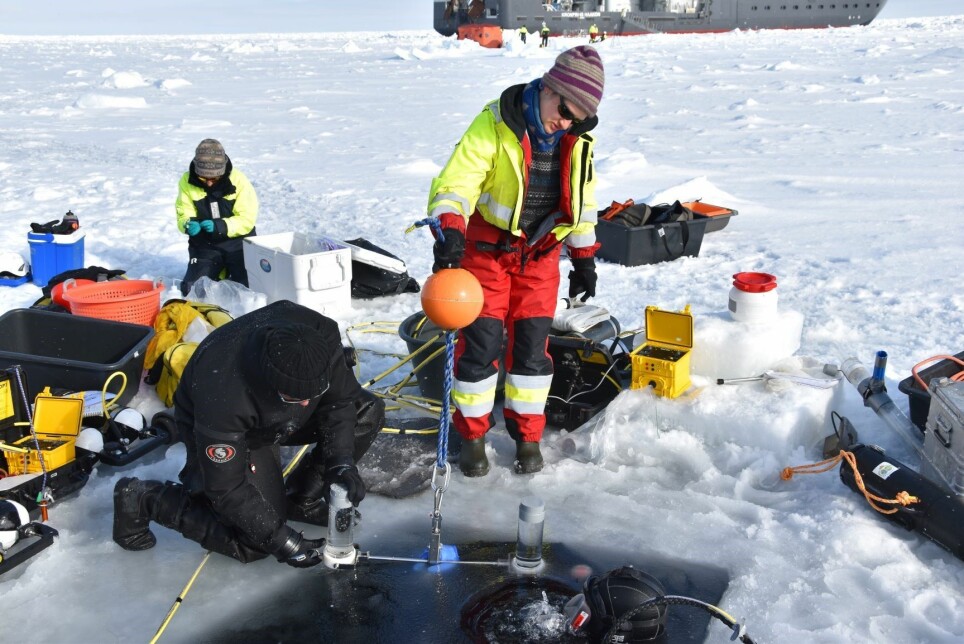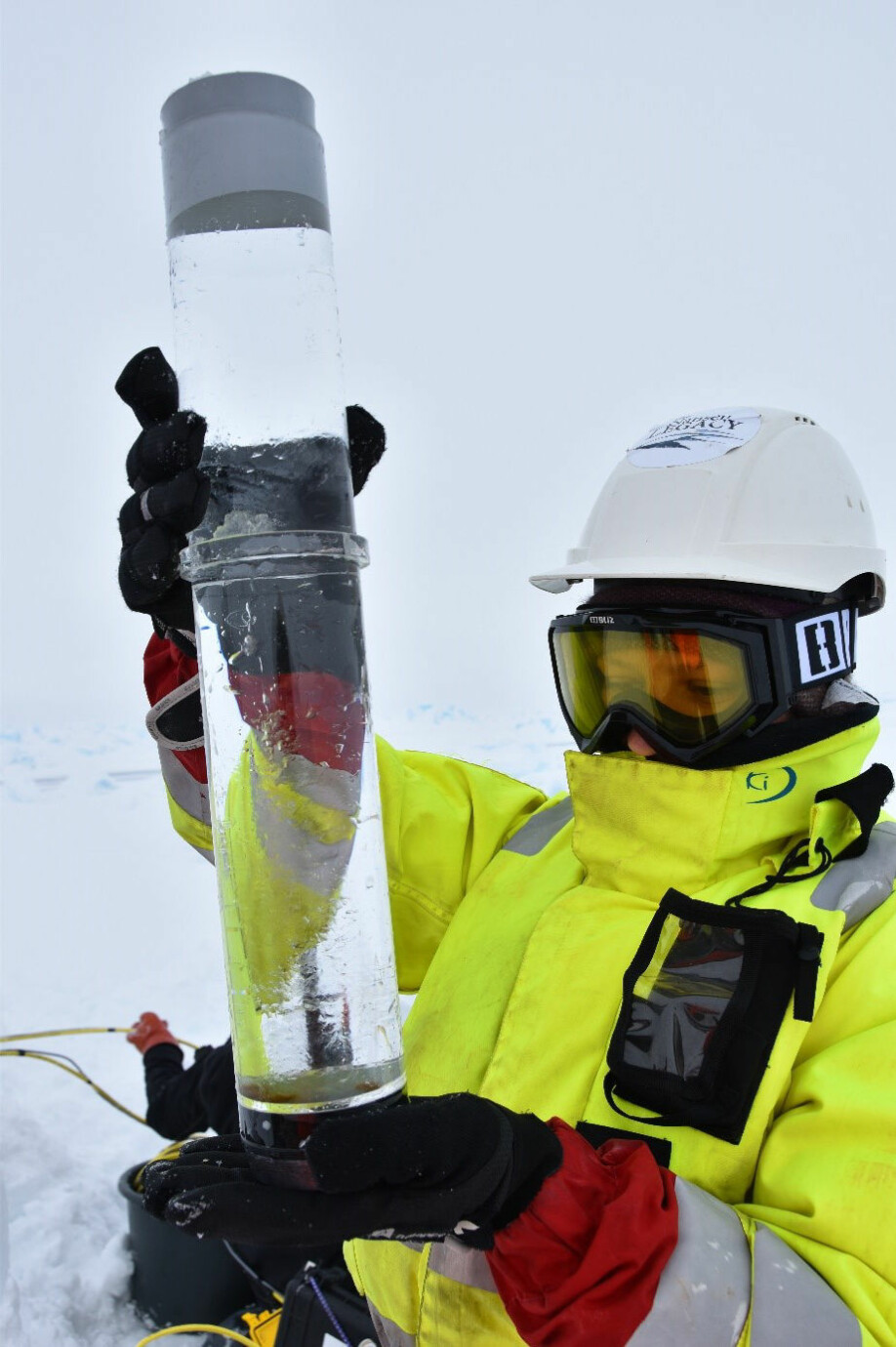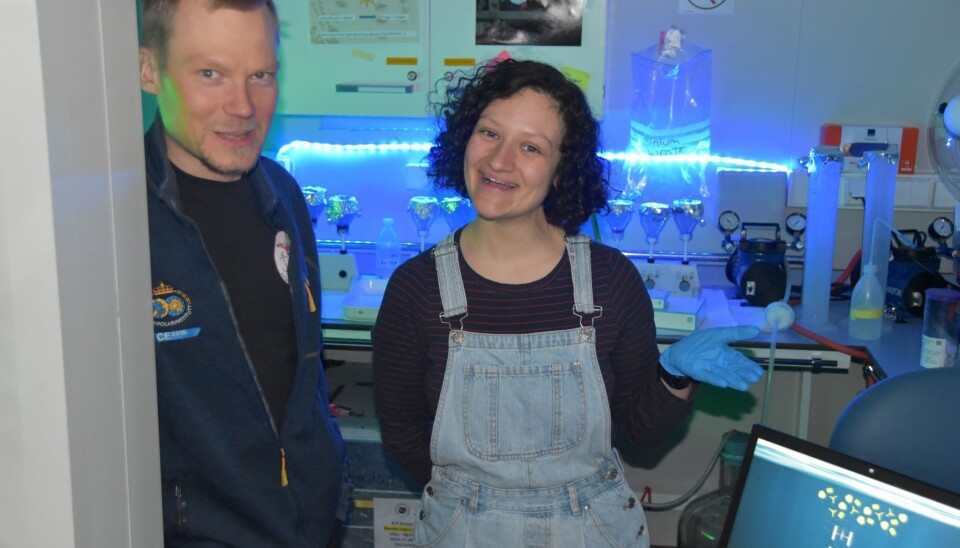
Algae sinking into the abyss of the Arctic Ocean
Primary producers: ice algae and phytoplankton
The Nansen Legacy Q2 cruise with RV "Kronprins Haakon" conducts ecosystem studies in the drift ice in the northern Barents Sea and Arctic Ocean during May. Ice algae and phytoplankton are the primary producers in the arctic marine system. They produce sugars and lipids by taking up carbon dioxide from the water and use available sunlight and nutrients to grow. But what happens with them afterwards?
Not eaten, or eaten and eaten again before reaching the bottom
Some of the ice algae are eaten by grazers, such as the ice amphipod Apherusa glacialis, which is a small, white crustacean that lives on the underside of the ice. They swarm around on the ice and can be very abundant. The ice algae eventually melt out or fall off the ice and sink into the water column. During the spring bloom, when zooplankton grazers cannot eat up the large production of ice algae, much of the organic material will reach the ocean floor, where starved benthic animals may have their first meal of the season. Later in the season, the growing zooplankton populations may effectively graze down phytoplankton blooms, and the material can then be eaten, defecated and eaten again on its way to the bottom.
Pelagic-benthic coupling and vertical flux
The connection between the ice, water mass and bottom, is called pelagic-benthic coupling, and then sinking of organic material is called vertical flux. The coupling can be strong if lots of material sinks to the bottom, but weak if most of the material disappears on the way down, because it has been eaten and defecated too many times by zooplankton in the water column. Shelf seas, such as the Barents Sea typically has a strong pelagic-benthic coupling because of high production of both ice algae and phytoplankton, and a relative short distance to the bottom (250 m). The vertical flux varies seasonally, and in years when spring comes late, the food to the benthos may be delayed.

Who sinks first and last?
It is important to get proper measurements of the vertical flux. This will tell us what happens to the production after the algae have done their job and start to sink. Diatoms, which are the algae that typically bloom first, sink fastest because of their large size compared to other algae and their heavy glass houses. As the bloom goes on, flagellates, which can move with flagella to prevent sinking, and smaller algae sink next, and much slower than the diatoms. Faecal pellets of ice amphipods and zooplankton also contribute to the vertical flux as well.

Sediment traps to measure vertical flux
Sediment traps, which are long tubes of plexiglass attached to a rig placed vertically in the water, are used to measure the sinking of organic particles. Yasemin Bodur, who is Ph.D. student at UiT, the Arctic University of Norway, is studying the vertical flux of organic matter in the Barents Sea and Arctic Ocean. Some rigs with sediment traps are put out in open water at different depths, and some are attached to the underside of sea ice with help from scientific divers. The traps are typically out for 24 hours to collect whatever sinks into them, such as algae, faecal pellets and swimmers, which are live zooplankton.
Analyses of sediment trap content
In the laboratory, Yasemin will study the contents of the sediment traps in the microscope and identify the algae and zooplankton, and the origin of faecal pellets based on their shapes. Samples will be further analysed for organic content, stable isotopes of carbon and nitrogen, and fatty acid signatures. Then she will be able to tell whether the organic content was produced by ice algae or phytoplankton, and who ate the algae before they were defecated and made their way into the traps.

Vertical flux in a climate perspective
The ocean takes up carbon dioxide from the atmosphere, which is utilized by algae in their production, and then subsequently sinks to the bottom, where it is eaten up or buried. A strong pelagic-benthic coupling will therefore act as a sink and removal of carbon dioxide from the atmosphere.
However, when sea ice disappears because of climate warming, pelagic production will increase at the expense of ice algal production. One scenario for the consequences is that most of the organic material will then be used and recycled in the water column, and little will sink to the bottom because many phytoplankton species sink slowly. This would mean poor feeding condition for organisms that live close to or at the bottom, such as shrimp, clams, bristle worms and brittle stars. A weaker pelagic-benthic coupling would imply that the ocean takes up less carbon dioxide from the atmosphere, and will therefore to a lesser extent reduce greenhouse gasses contributing to climate warming.







